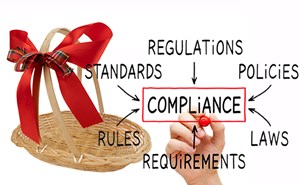You as emergency physicians have a rare opportunity to provide input on a proposed emergency medicine-specific cost measure that will soon be tested out in the field. Before describing more about what this testing process is all about, let me provide some context for why the development of this measure is so important.
Why is it important for emergency physicians to have a reliable cost measure?
As some of you may know, there is a dearth of available cost measures in the Merit-based Incentive Payment System (MIPS) and other quality reporting programs that are applicable to emergency physicians. There are four performance categories in MIPS, and the “Cost” category is becoming more critical, as it will represent 30 percent of the total MIPS score starting next year. The payment adjustments under MIPS range between -9 and +9 percent, so your overall performance in the program can have a major impact on your revenue.
Right now, the main cost measure that some emergency physicians are accountable for in MIPS is a general measure called the Medicare Spending Per Beneficiary (MSPB) clinician Measure. The MSPB measure captures the “cost of services performed by hospitals and other healthcare providers during the period immediately prior to, during, and following a beneficiary's hospital stay.” It attributes all Medicare Part A and B costs occurring in the episode window to the clinician(s) responsible for care—which could end up indirectly being an emergency physician. This is unfair, as you are generally not the physician driving the cost of care delivered during a hospital stay. Unfortunately, the cost measure can be attributed to you or your group nevertheless. Another issue is that this measure is a black box calculated by CMS using administrative data, and we’ve heard numerous complaints from you about the validity of the measure and its attribution methodology. Obviously, this lack of transparency needs to be addressed—and you need to have a solid, reliable cost measure that reflects the cost of care you provide —or else you could be subject to substantial financial penalties in the MIPS program going forward.
Another reason why we need to have a reliable emergency medicine-specific cost measure is to advance the emergency medicine MIPS Value Pathway (MVP) that will begin in 2023. As a reminder, the Centers for Medicare & Medicaid Services (CMS) heard feedback, including from ACEP, that MIPS reporting should be streamlined and more meaningful to clinicians. Therefore, CMS created an approach, called MVPs, that would allow clinicians to report on a uniform set of measures on a particular episode or condition in order to get MIPS credit. ACEP formed a task force and proposed an emergency medicine MVP to CMS for consideration in 2021. In the Calendar Year (CY) 2022 Physician Fee Schedule (PFS) and Quality Payment Program (QPP) final regulation, CMS decided to adopt ACEP’s proposed MVP starting in 2023! The emergency medicine MVP attempts to capture care to patients with the most common undifferentiated high-risk conditions that may occur within the emergency department (ED), including chest pain, abdominal pain, headache, and back pain. However, there are no cost measures that are applicable to the MVP—and having a cost measure in an MVP is a requirement. Therefore, as a placeholder, the MVP includes the MSPB cost measure, and we hope to replace that measure with an actual emergency medicine-specific cost measure as soon as possible.
So what’s happening to address this issue?
To help address the lack of emergency medicine-specific cost measures, CMS and their contractor, Acumen, convened an expert panel to develop a cost measure that could be directly attributable to emergency medicine clinicians. ACEP has helped lead the way in that process. An ACEP member has had the opportunity to chair the expert panel and other ACEP members have served on the panel as well.
Using the insights from the panel, Acumen constructed a draft emergency medicine cost measure. The draft measure includes elements of ACEP’s alternative payment model, the Acute Unscheduled Care Model, and the emergency medicine MVP. As constructed, the measure captures the cost of episodes of emergency care for a defined set of conditions (there are 28 proposed ED visit episode types). Each episode is triggered by an ED visit and then encompasses the costs of all Medicare Part A and Part B services (except for non-related clinical services) during a 30-day window post visit. Thus, the emergency physician or group is responsible for most costs that occur in the 30 days post-ED discharge. The cost measure is risk adjusted and also excludes specific episodes, including those with hospital-to-hospital transfers, ED-to-ED transfers, and medical complications.
Again, this is a DRAFT measure. In order to help refine and finalize the measure, the measure must go through field testing. Field Testing for the measure will run from January 10 to February 25, 2022. Once this field testing period ends, the expert panel will work with Acumen to create the final measure based upon feedback from the field.
CMS will then have to propose and finalize the cost measure in a PFS and QPP annual regulation. The next PFS and QPP reg, which will be released next year, will impact policies in 2023. Therefore, the earliest this cost measure could be implemented is in 2023-- which will coincide with the launch of the emergency medicine MVP in the MIPS program. Beyond just MIPS, the measure could also serve as a national standard for measuring costs in emergency medicine and could eventually be adopted by private payors and state Medicaid programs.
What exactly is field testing?
I’m glad you asked! Field testing is an opportunity for you to learn about the cost measure and to provide feedback via an online survey on the draft measure. Conducting field testing helps CMS and Acumen to assess the measure’s importance, scientific acceptability, and clinical validity. As stated above, feedback shared on this draft measure will be used to consider potential measure refinements. Thus, it is critical that you as emergency physicians provide any feedback on the measure to make sure it is accurate and reliable and actually reflects the cost of care that is associated with a qualifying ED visit.
You don’t have to register for field testing. Clinicians and clinician groups with at least 20 episodes for the measure will automatically receive a Field Test Report with information about their cost performance. However, in order for you or your group to access your field test report, which will be delivered via the Quality Payment Program (QPP) website, a QPP website account will be necessary.
If you are part of a group who receives a field test report (i.e., you have at least 20 episodes for this measure over the period), we highly encourage you to provide field testing feedback on the measure specifications and on the field test reports. Even if you don’t receive a field test report, you can still provide feedback using a Mock Field Test Report that will be available on the MACRA Feedback Page starting on January 10, 2022 when the testing period begins.
Again, why exactly should you participate in field testing and provide input on the draft measure?
Another great question (although I covered some of the reasons already)! To sum up, there are four main reasons why you should participate:
- First and foremost, participating will give you a direct opportunity to influence a measure that, if finalized, will have a significant impact on your Medicare reimbursement (since, again, the Cost category represents 30 percent of your MIPS score going forward).
- As a participant, you will receive access to mock feedback reports detailing your performance on the draft measure. These reports will include useful data that may give you some interesting insights and perspective on the cost of the care you are delivering for common episodes of emergency care.
- If the measure is adopted and incorporated into the emergency-medicine MVP, participating in field testing now will help you prepare for the launch of the MVP in 2023.
- Participating will also give you more experience evaluating the cost of the care you deliver, as new cost-based measures are adopted not only by Medicare, but by other payors as well down the road.
Interested? How can you find out more information?
To learn more about the cost measure and field testing, CMS and Acumen are hosting two office hour sessions:
- Preparing for Field Testing Office Hours Session 1 – Thursday, January 6, from 1-2 ET
- Making the Most of Field Testing Office Hours Session 2 – Wednesday, January 26, from 2:30-3:30 ET
Acumen also has stated that they plan to release frequently asked questions (FAQs) and more guidance on the CMS website once field testing begins.
Please note that the emergency medicine cost measure is not the only measure that will go through field testing during this time. Four other measures will also be tested. These measures focus on the following clinical areas:
- Heart Failure
- Low Back Pain
- Major Depressive Disorder
- Psychoses/Related Conditions
In all, we are excited about this great opportunity to influence the first, and only, emergency medicine-specific cost measure. Again, this is an extremely important measure that may be incorporated into MIPS and perhaps into the emergency medicine MVP as well. We hope you will consider providing feedback on the measure during field testing!
Before I conclude, I want to send out a special thank you to Dr. Susan Nedza for her leadership on this initiative (and for her review of this post!). Dr. Nedza has been instrumental in not only the development of this cost measure, but in the conception of the AUCM and the emergency medicine MVP as well. We are so fortunate to have received all of her vital contributions that have truly helped advance the emergency medicine specialty.
Lastly, I want to make a quick programming note. This is the last blog post I’ll write in 2021, and we’ll be back in full swing on January 6, 2022! Happy Holidays!
Until next year, this is Jeffrey saying, enjoy reading regs with your eggs.






